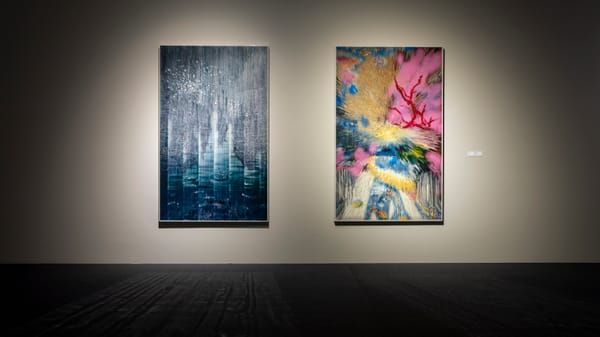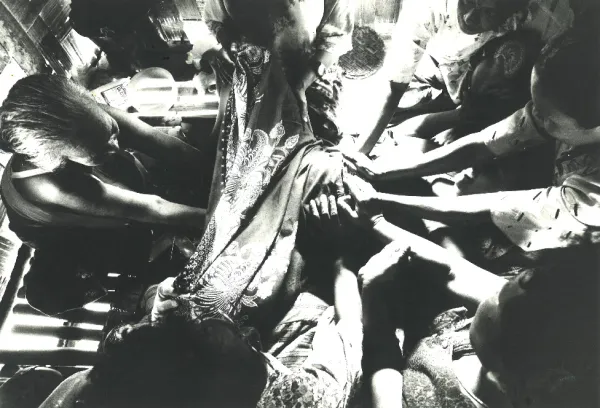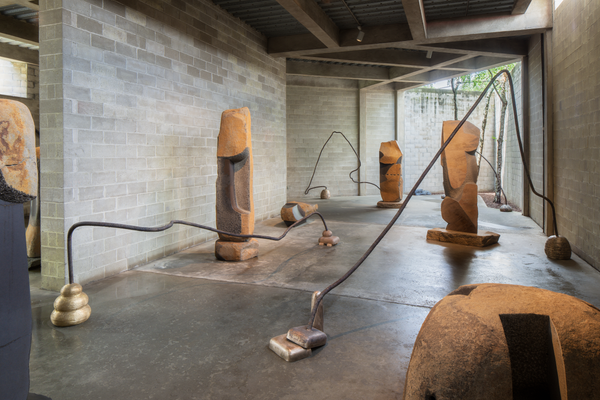Shows
58th Venice Biennale, Part 3: National Pavilions in the Arsenale
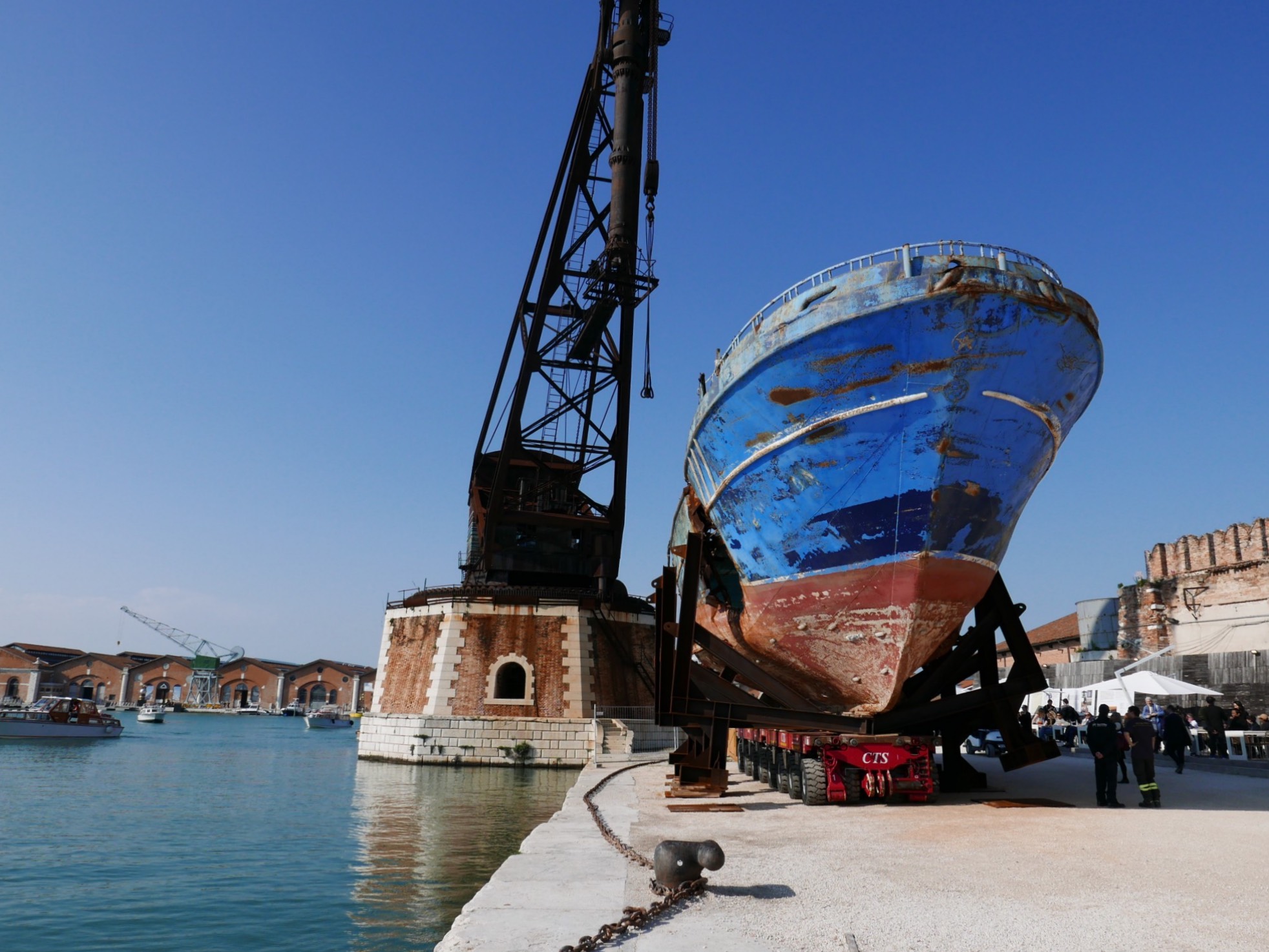

For those who noticed the massive, 23-meter-long rusting fishing boat with two gaping holes in its hull, sitting next to the placid Arsenale shipyard’s waters—and it seemed like many biennale-goers did not—Christoph Büchel’s Barca Nostra (“Our Boat”) (2019) was a horrific piece of evidence testifying to the thousands who have died trying to cross the Mediterranean in the past decade. It certainly doesn’t look like an artwork, next to the shipyard’s old crane. But it has a story to tell in this context. More than 800, and possibly as a many as 1,100 people, were packed into the ship when it sank after colliding with a Portuguese rescue boat in April 2015 off the coast of Libya.
The boat’s placement on the edge of the Arsenale, near an outdoor café, also underscores the dynamic in which the privileged carry on with their cultured lives while those desperate to reach European shores are forced into dangerous and often fatal situations. Predictably, the artwork has set off a political firestorm in Italy, with far-right politicians like the deputy prime minister Matteo Salvini—who closed Italian ports to rescue boats—denouncing the work as propaganda. Meanwhile, curator of the 58th Venice Biennale Ralph Rugoff has defended his choice to include Büchel’s project, stating that it provides a confrontation with a material reality that is so often abstracted or reduced to a newspaper image. Here the word “interesting,” of the Biennale’s title “May You Live in Interesting Times,” does not rise to the occasion. Whether to look or not, and whether looking has any potential to inspire empathy or action, are discomfiting questions that Büchel’s project leaves gravely unresolved for the viewers who care to notice.
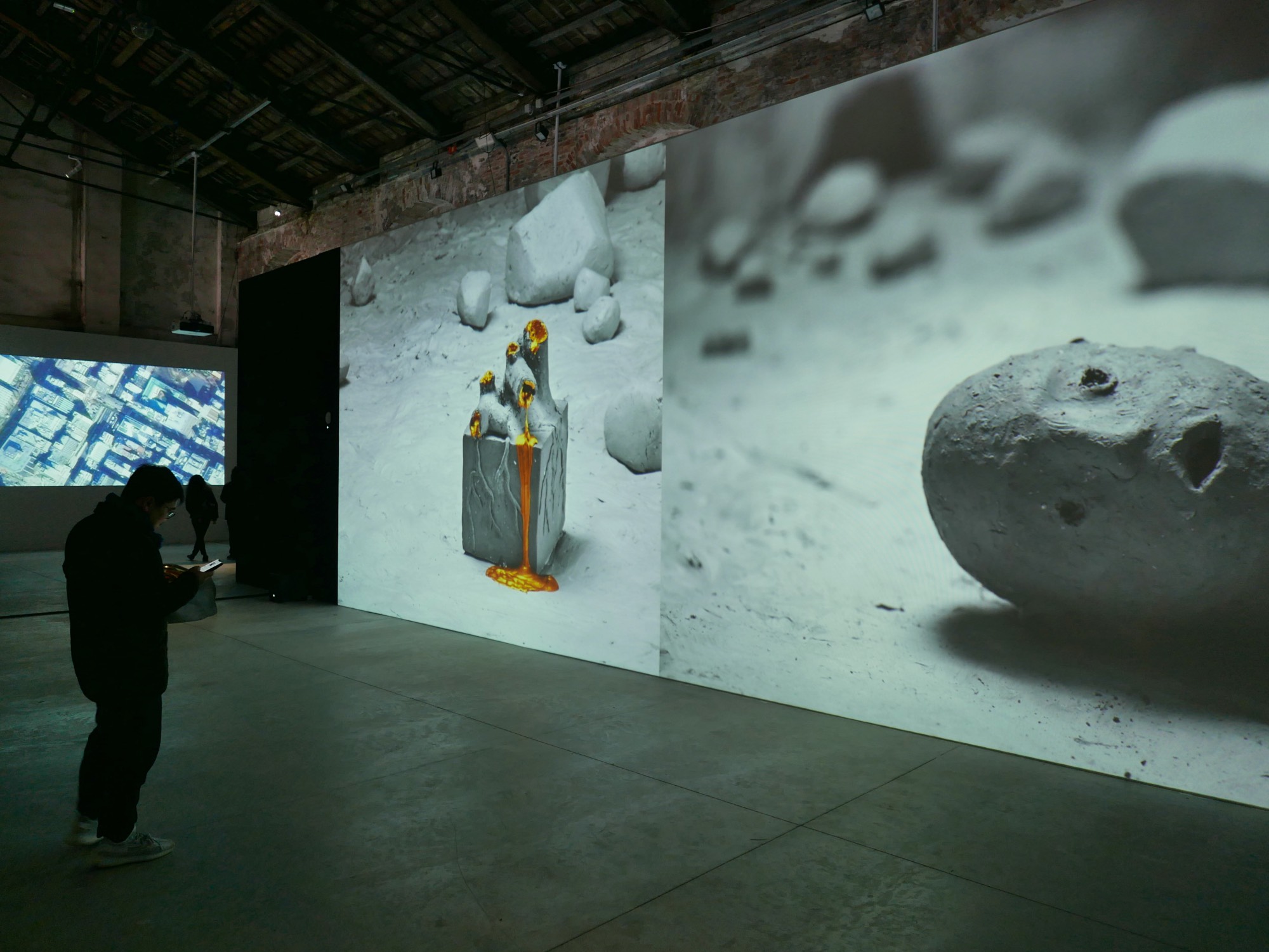
China
Chen Qi, Fei Jun, Geng Xue, He Xiangyu
“Re-睿”
Curated by Wu Hongliang, the China Pavilion, titled “Re-睿”, combines the suffix for looking back with the nearly homophonic character 睿 (rui), meaning “wisdom.” The curator was inspired by the classical gardens of Suzhou and the hutongs of Beijing, which Venice reminded him of, and his belief that in order to solve the problems of today, we have to look back at the knowledge of the past. The pavilion itself is supposed to be designed like a three-dimensional Chinese scroll, though it begins with a mobile app by Fei Jun, titled Re-Search, that connects the bridges in Venice to ones in China. However, it’s nearly impossible to download the 1 GB app on site—this is a remote corner of old Venice, after all. Far more accessible is Fei Jun’s interactive installation Interesting World, Installation 2 (2019), which appears to use footage from a virtual-earth mapping program, taking viewers’ faces and super-imposing them onto the figures of people in China, the US and Venice, while also identifying, though artificial intelligence, other objects and figures on the screen. Geng Xue’s massive black-and-white video installation The Name of Gold (2019) features clay figures in a flatfooted allegory of reincarnation, while her gold-lined sculptural ponds contain monitors that play parts of this claymation narrative. Chen Qi’s similarly massive The Born and the Expansion of 2012 (2019) is a 12-part woodblock print of water-ripple patterns that are installed as an immersive wallpaper. Two other installations by Chen Qi, one a corridor, the other an octagonal-shaped mini pavilion outside the garden, each have abstract shapes cut into the ceiling, referencing the patterns of worm-eaten books. The mini pavilion was soaked and mud-covered after two days of rain. He Xiangyu’s installation of a pink-carpeted space and walls, with sculptures, Everything We Create is Not Ourselves (2019), relates to the tongue and his experience in Berlin trying to speak a foreign language, and is the most visually accessible of the works in its immediate, tactile presence.

Georgia
Anna KE
“REARMIRRORVIEW, Simulation is Simulation, is Simulation, is Simulation . . .”
REARMIRRORVIEW, Simulation is Simulation, is Simulation, is Simulation . . . is the title of Anna KE’s stepped structure—white on one side, black on the other—that filled the space of the Georgia Pavilion, curated by Margot Norton. The tiled surfaces are cut through by colorful curving shapes that spell out the English word “deranged” and the numbers one through ten; embedded in the steps are video monitors showing the artist and others performing simple actions in her studio, such as posing herself according to the grid of her industrial windows. Additionally, the steps contain metal shapes evoking letters of the original Georgian alphabet (asomtavruli) that double as faucets of running water. The back of the structure is identical in shape except the colors—including on the monitors—are all inverted. The aesthetic is reminiscent of a digital rendering, with the tiles resembling digital pixels, and the flat colored letters stretched to the point of illegibility across the surfaces, putting the artist’s simple, real-world performances into a virtual realm. The real-life installation looked nearly exactly like the digital renderings of it released before the Biennale’s opening—which suggests the kind of hybrid and hermetic space that the work is meant to evoke. Even the running water, which passes through mesh screens, disappears below the surface and seems to be running in a perfect, continuous loop, transforming the entire space into something uncanny, like a real-world digital simulation.
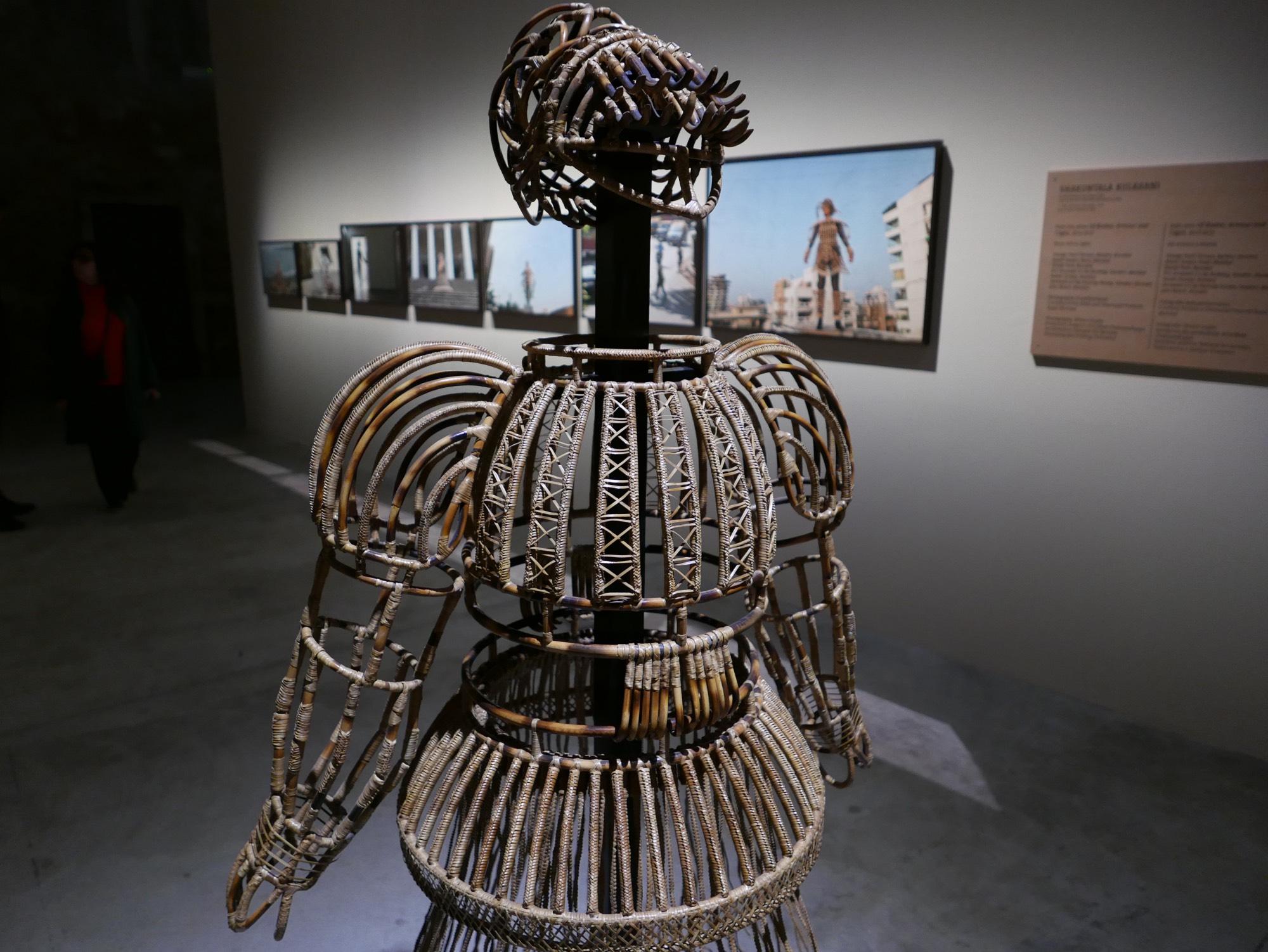
India
Nandalal Bose, Atul Dodiya, GR Iranna, Rummana Hussain, Jitish Kallat, Shakuntala Kulkarni, Ashim Purkayastha
"Out Time for a Future Caring"
The 150th anniversary of Mahatma Gandhi’s birth is the occasion for the second India Pavilion, “Our Time for a Future Caring,” organized by the National Gallery of Modern Art (NGMA) and the Kiran Nadar Museum of Art at the Venice Biennale, after a gap of eight years since the inaugural India Pavilion in 2011. Except for photographs by Kanu Gandhi, showing his great-uncle at mass rallies, Gandhi himself was not the subject of the works by eight artists. Nandalal Bose’s “The Haripura Congress Posters” (1937–38), however, were commissioned by Gandhi, and depict India craftsmen and workers, from potters to wool-spinners, in a simple, modern style—an aesthetic embodiment of Gandhi’s vision for a post-colonial India. MF Husain’s seminal painting Zamin/Zameen (Land) (1955), from the NGMA’s collection, is a similar tableau of rural life in India, organized like a mural, with separate vignettes depicting animals, plants, and people at work. From artists born in the postwar era, Jitish Kallat presented his iconic installation Covering Letter (2012), which features a curtain of fog onto which is projected a letter written by Gandhi to Hitler in July 1939 imploring him to prevent war. GR Iranna’s installation of a wall of hundreds of different wooden shoes (padukas) immediately evokes Gandhi’s satyagraha (“salt march”) and his vision of collective action. Perhaps most interesting were contributions by two women artists, Rummana Hussain and Shakuntala Kulkarni, whose relationship to Gandhi’s legacy is perhaps more complicated. Hussain’s installation Fragments (Conflux) (1993), of ceramic shards, raw terracotta, and red ochre pigment (gheru), evokes the loss of traditional crafts. Kulkarni’s works are series of cane costumes that resemble armor, and she is depicted in photographs wearing these outfits in locations in Mumbai, in her words, “negotiating, reclaiming the vanishing culture and history.”
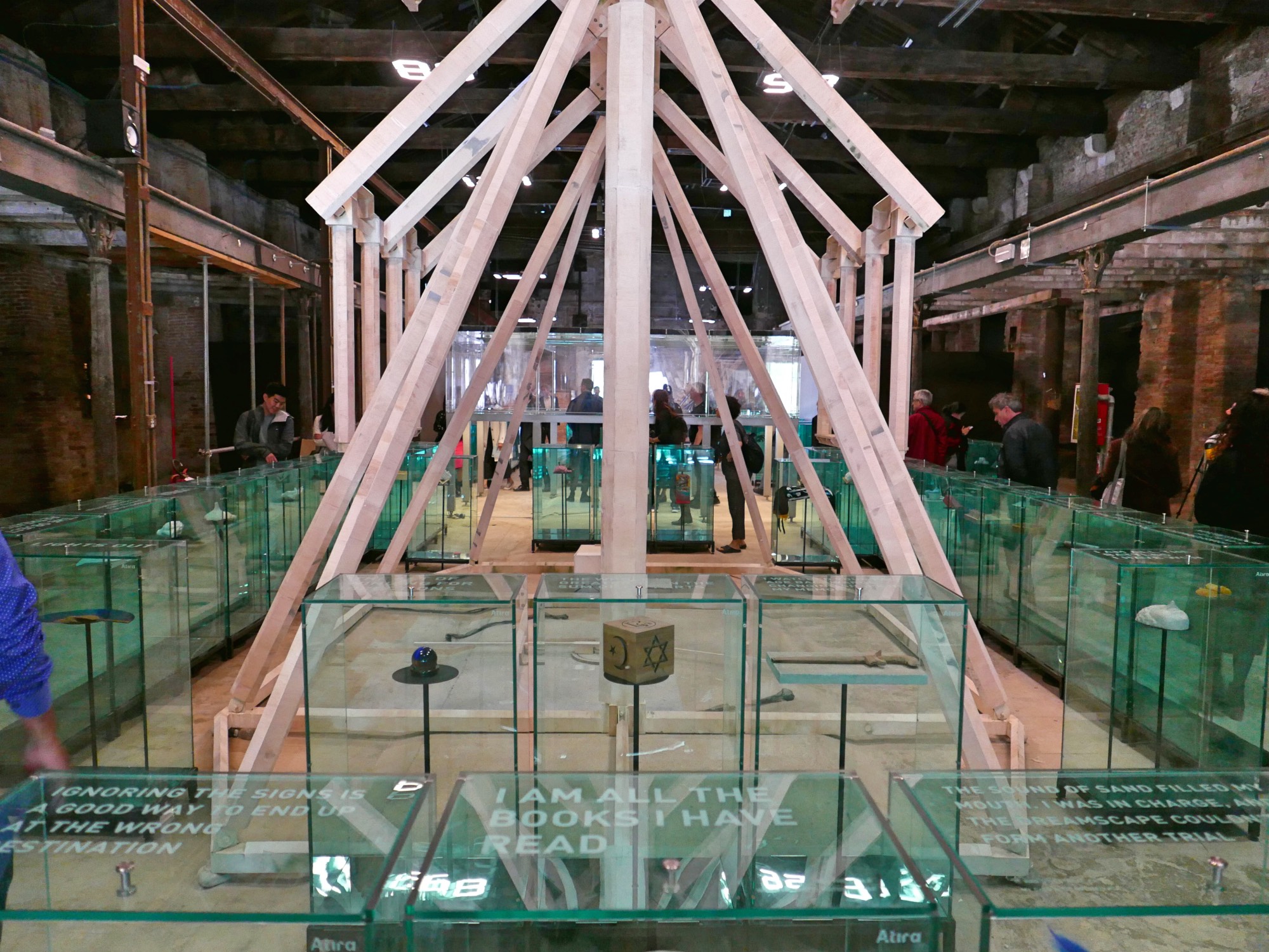
Indonesia
Asmudjo J. Irianto, Yacobus Ari Respati, Syagini Ratna Wulan, Handiwirman Saputra
“Lost Verses: Akal Tak Sekali Datang, Runding Tak Sekali Tiba”
The third Indonesia Pavilion is a collective one designed by Asmudjo J. Irianto, Yacobus Ari Respati, Syagini Ratna Wulan, and Handiwirman Saputra (whose works are also featured in the central exhibition). The large space in the Arsenale was filled with numbered glass vitrines, the tops of which are etched with proverbs and each of which contain sculpture objects that relate, ostensibly, to the sayings. In the center of the space was a large wooden structure resembling a carousel, which, as one of the organizers explained to me, was meant to carry visitors up to the rafters for a birds-eye view of the space (unsurprisingly, this didn’t pass the Biennale’s safety standards). It’s not particularly obvious how to play the game, given the lack of visible instructions (and small wall labels with miniscule font), but essentially one is meant to choose one of the six boxes at the beginning, which then leads to other boxes around the space, until you decide to exit, at which point you enter the number of each box into a machine that gives you a receipt that contains the various sayings. If you get tired along the way, there is a glass cubicle in the middle where you can stop for a break and smoke one of the provided Indonesian clove-cigarettes (probably also a violation of Italian health and safety rules—but Biennale officials apparently started looking the other way after the Biennale’s director tried one). Like the Japan Pavilion’s effort to break from individual showcases and create a collective experience, the Indonesia Pavilion is an attempt to do something different at the Biennale. If the Indonesia Pavilion’s project was about “the risk of producing misinterpretations due to the disappearance of certain elements that are in fact required,” as the text said, then it was successful by this measure.
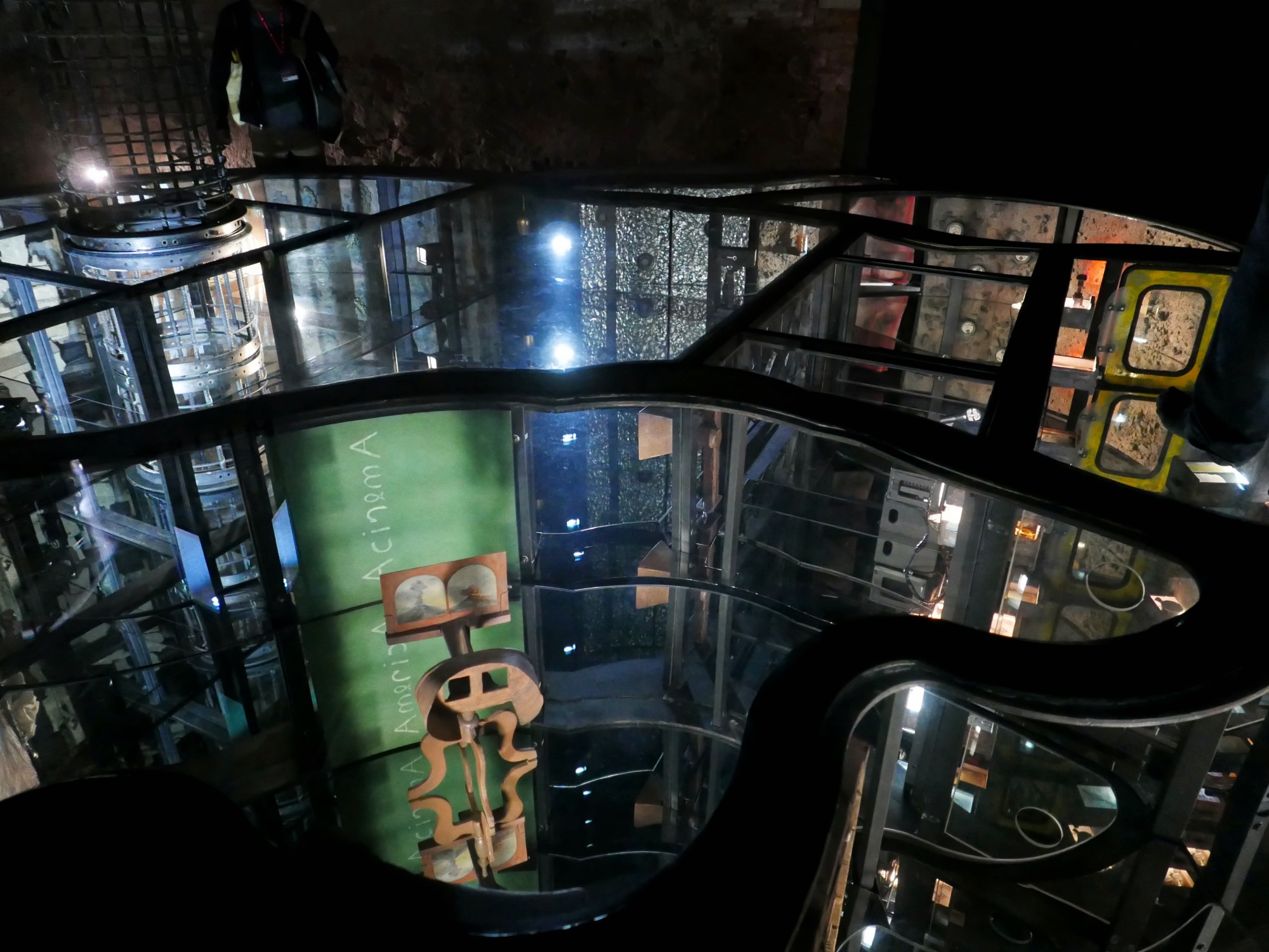
Philippines
Mark Justiniani
"Island Weather"
Speaking of potentially hazardous pavilions, I nearly fell off the one-meter-high curving metal platforms of Mark Justiniani’s installation Arkipelago in the darkened space of the Philippines Pavilion, titled “Island Weather” and curated by Tessa Maria Guazon. I was looking down (and at one location, up) with some trepidation at the deep wells of the illuminated, mirrored dioramas beneath my feet that effectively dissolve borders and disorient the viewer, perhaps a little too well. The three steel structures are a continuation of Justiniani’s “Infinity Series” that use an optical phenomenon to create the illusion of objects repeating and receding into an endless space. Justiniani uses this mirrored effect with objects evoking the island-nation’s relationship to navigation and colonialization in each of the three structures—Island Voyage, Local Forecast: Turbulent Weather, and Piers and Ports. There are steel forms reminiscent of early lighthouses; telescopes and other optical devices; specimen drawers; rusted megaphones; and dioramas of classrooms and village houses, each referring to different episodes in the invasion and occupation of the Philippines. The work’s weakness is that everything in it repeats endlessly, giving every object the same rendering. Perhaps for viewers who haven’t encountered Justiniani’s works previously, the novelty of his infinity spaces will be captivating enough as a metaphor for “shared vulnerability,” but as someone who has seen other topics of Philippines history presented in the same fashion in other of the artist's projects, it is very repetitive.
HG Masters is deputy editor and deputy publisher of ArtAsiaPacific.
The Venice Biennale is on view at various locations in Venice until November 24, 2019.





